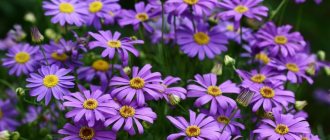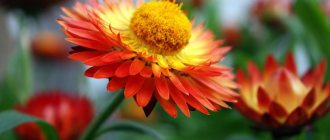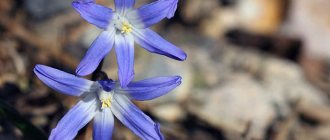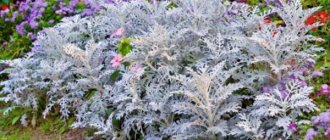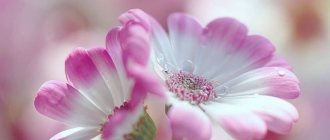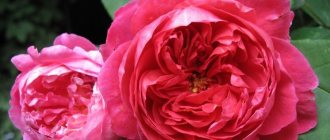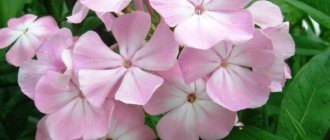Decorative leaves of cineraria, covered with silvery pubescence, create the impression of icing. These spectacular shrubs make excellent compositions with other plants. The article describes in detail the silver cineraria plant - planting and care, presents photos in the garden, tells how to properly grow it in a summer cottage and on a balcony, how it can overwinter, and how to propagate it.
Description of the plant
Cineraria are herbs or shrubs from the Asteraceae family. Some plants from the genus Raspberry are called cineraria.
The most popular species in our gardens is Cineraria silver. More recently, these plants have been transferred to another genus, so there is often confusion in the names. Currently, silver cineraria is classified in the genus Jacobea (Jacobaea), the Asteraceae family. And if earlier its name was Senecio cineraria, today it belongs to a different genus and is called Jacobaea maritima. Despite these changes, the old name is still widely used and few people know the new name.
This species differs from others in its silvery pubescence, for which it received the name “silver”. Other names also popular:
- Ashy ragwort;
- Cineraria ashy;
- Silver cineraria;
- Cineraria;
- Cineraria maritima.
The homeland of Senecio cineraria is Southern Europe, where the plant found the best conditions for development in many areas. In nature, these are low shrubs 60-80 cm high, woody at the base, inhabiting rocky slopes. In our climatic conditions, ashthorn is often grown as a garden annual or perennial plant, if it is provided with conditions for wintering under a roof - in unheated basements with a window, a bright garage, an attic, stairwells.
Plant characteristics:
- In gardens, the ashtray reaches a height of 15-40 cm.
- The shoots are rigid, highly branched at the base, covered with silvery pubescence, and densely leafy. The pubescence protects the stems and leaves from sudden changes in temperature and excessive evaporation of water from the tissues.
- The leaves are pubescent, deeply dissected. The pubescence is soft, silky to the touch, and looks like winter frost. The lower leaves are located on petioles, the upper leaves are sessile, less dissected. On the underside of the leaf the pubescence is much denser than on the top. On older leaves, the pubescence becomes coarser, acquiring a greenish tint.
- Flowers. Small yellow, odorless flowers appear from July to September in the second year of cultivation, so cineraria rarely blooms in our climate. The flowers are collected in inflorescences-baskets, consisting of marginal reed flowers, and the inner ones - of tubular ones. The flowers are typical of the entire Aster family, with flower baskets resembling daisies with a diameter of 1.5 cm.
- The fruit is an achene.
How to choose in the store?
You can buy not only cuttings of cineraria, but also a ready-made bush. Most stores offer a wide range of this crop, it all depends on the personal preferences of the grower.
Before making a purchase, the selected shrub should be inspected. They evaluate not only its decorative qualities, but also its overall appearance. Shoots and leaves should be free of spots, rot, and have a healthy green tint.
If the cineraria has already bloomed, then all attention should be paid to the buds and the flowers themselves. It is better to buy a bush that has more flowers that have not yet bloomed, then the purchase will delight you with its beauty for a whole month
The presence of insects on the inside of the leaf indicates that the plant is infected. Some pests quickly move to other indoor plants, so you should avoid such a purchase.
Popular varieties
Low varieties of cineraria usually reach 30-40 cm in height and are most often found on sale, but there are varieties that grow up to 80 cm. It is worth paying attention to this when purchasing.
Interesting varieties of silver cineraria:
- "Candicans" Candicans - the variety grows up to 30 cm, excellent for flower beds and edging.
- "Silverdust" Silverdust is a popular low-growing variety with heavily pubescent leaves. Bushes quickly and has beautiful, matte leaves. It grows well and is distinguished by uniform silver coloring of the leaves.
- “Diamond” Diamond – grows larger than the Silverdust variety, to a height of 30-35 cm, not counting the peduncles. Produces characteristic, deeply lobed leaves with an impressive silvery color.
- “Alice” Alice is a low-growing ashthorn (30 cm).
- “Dusty Miller” Dusty Miller is a medium-growing variety (45 cm).
- "Cirrus" Cirrus is a variety with grayish leaves.
The best types and varieties of cineraria
Cineraria hybrida, which also goes by the names bloody or red, is indeed a hybrid of two species of cineraria from the wild nature of the Canary Islands. It was bred in 1777 by the British Royal Gardeners. Most often, this species is cultivated in greenhouses as a profusely flowering biennial.
The flowers slightly resemble daisies in appearance. Their color is striking in variety; two-color varieties are especially popular. A pleasant addition is the attractive aroma emanating from the flowers.
The most popular varieties of red cineraria are:
- Grandiflora (Grandifora), bushes of medium height, about 40-50 cm, are distinguished by large and bright inflorescences of a wide variety of colors;
- Nana (Nana), the shortest (up to 20-30 cm) and compact-looking plants, fit well into the indoor interior, with dense, brightly colored inflorescences;
- Stellata, the tallest representatives of this cineraria species, reaches 70 cm in height, with small star-shaped inflorescences. They will look great in the garden.
A peculiarity of growing hybrid cineraria from seeds at home is that the plants bloom only 8-9 months after sowing. Therefore, seeds are usually sown between May and October, depending on when it is desirable to obtain flowering bushes.
This plant has a very remarkable appearance. Its leaves are most decorative, most often gracefully indented in shape, densely pubescent with white hairs. Because of this, they have an original appearance, as if sprinkled with ash or covered with frosty frost. On a hot summer day, one look at these plants evokes a feeling of invigorating coolness.
The flowers of Cineraria Primorica are small, yellowish in color, and not particularly remarkable. Therefore, they are usually removed so that the bushes retain the desired shape and the flowers do not distract attention.
Cineraria littoria also has a number of popular varieties, differing in height, cut and shades of leaves.
Some of the most commonly grown varieties of cineraria should be described in more detail, because they are popular among gardeners in our country.
Florists are primarily attracted by the appearance of this Jacobea - carved velvet foliage of silver color. The buds of this species are bright yellow, but gardeners prefer to cut them off immediately because they do not combine well with other flowering plants. The height of the ashen ragwort is usually no more than 0.27-0.3 m. The most famous varieties of this ragwort are Usik and Silver Dust.
Cineraria hybrid
This indoor plant is very popular among lovers of indoor flowers, since its buds appear at a time when other flowers are still dormant - in February. Moreover, the blooming flowers amaze with their bright shades.
These indoor perennials can reach 25-30 cm in height, and their inflorescences resemble chamomile or gerbera flowers. Their diameter can be up to 22-23 cm, therefore, when fully opened, the inflorescences of the hybrid cineraria almost completely cover the foliage. The most popular hybrids in indoor floriculture are those with flowers in alizarin and purple shades. If you trim the fading inflorescences in time and do not expose the plants to direct sunlight, the flowering time can be extended to 15-20 days.
Cineraria hybrid
Cineraria bloody
Another name for this flower is bloody cross. The blooming buds, similar to small umbrellas, covering almost the entire bush, give the plant a high decorative appearance. The shades of these flowers are very diverse - from white and blue to pink, purple and crimson, as well as bright red.
Cineraria bloody
Cineraria graceful
The homeland of this species is South America. This species is the most unpretentious, and its decorativeness is no worse than that of other representatives of this family. Meanwhile, growing it in the garden is very simple, and the flowering of the buds lasts at least 2.5-3 weeks, so these flowers can very often be found not only in garden plots, but also in squares and park areas.
Cineraria graceful
Requirements for planting site and soil
Cineraria is not too demanding, but for it to be truly beautiful, it needs to be provided with proper growing conditions.
The species requires planting in a sunny place; only in full sun do the bushes form silvery decorative pubescence.
In shaded areas, the color of the leaves will be green, which will make them less decorative. Ashtray is able to grow in fairly dry areas. Only after planting is it necessary to regularly water the seedlings to help them take root.
Ashgrass has low requirements and does well in any garden soil. However, if we want to grow it as a perennial, then we need to provide a fertile, permeable substrate.
The soil for cineraria should be:
- fertile;
- permeable;
- humus;
- with a neutral or slightly acidic pH (pH 6-7.3).
Timing for planting silver cineraria seedlings
It is best to plant the crop in March and April. However, depending on the region, the sowing time will also vary:
- In the middle zone (Moscow region) – March 15-30.
- In Siberia and the Leningrad region, as well as in the Urals - in early - mid-April.
- In the southern regions - in early March.
You can also refer to the lunar calendar. In 2022, it is recommended to sow cineraria:
- March - 12-17, 19, 20.
- April - 6-8, 11-13, 15-17.
Unfavorable days for planting:
- March - 6, 7, 21.
- April—5, 19.
Planting, post-planting care
Planting date (when is it better to plant silver cineraria in open ground): from the beginning of April to the end of September.
Cineraria seedlings
Before planting cineraria, you need to prepare the site well: dig up, select weeds from the soil and add rotted compost to the soil, since the ashthorn loves fertile soils. We plant silver cineraria at a distance of 20 × 20 cm.
After planting, cineraria needs to be watered regularly for the first weeks.
When the seedlings acclimatize in a new place, it is worth cutting off the tops of their shoots so that the plants bloom better and become denser.
Further care of ornamental crops
After planting in a permanent place, caring for cineraria is not difficult - standard measures. The main thing is not to forget that watering is carried out only in the absence of rain, but weeding and loosening is done weekly.
To improve quality, development and improved flowering, the following is carried out:
- mulching. Sawdust (only rotted) or herbal gruel is used;
- feed with mineral complexes or organic matter (it is better to alternate) up to 3-4 times a month. At the same time, substances with a high nitrogen content are avoided;
- pruning is necessary to form a bush and make it decorative;
- prevention against diseases, infections, parasitic insects. Spraying is carried out if the summer is rainy.
Cineraria is respected for its unpretentiousness and ease of care. Plus, the plant feels great as an indoor flower. It gets along with most flower crops, which will help create a universal front garden design.
Growing and care
Watering
Young plants do not respond well to a lack of water, but older bushes have no problem withstanding short-term lack of soil moisture. However, the species does not tolerate heavy wet soils and excess water. In such conditions, fungal diseases quickly develop in adult plants. Ashtray grows best in a sunny place with a moderately moist substrate. During hot summers and prolonged drought, cineraria needs watering, but not much.
Overwintering indoor plants are watered moderately, periodically providing moisture to the dried substrate.
Fertilizers
Cineraria is fed after planting in the garden - natural fertilizers (vermicompost, compost) are added. From June to September, fertilize with liquid fertilizers intended for flowering plants, in accordance with the dosage indicated on the label. Fertilizers are applied to the soil. You can also feed cineraria with liquid foliar fertilizers (one leaf at a time).
Trimming
The plant owes its spectacular appearance to the silvery leaves that densely cover the shoots. Trimming the tips of the shoots helps the plant bloom and maintain its compact shape. In late autumn and spring, dried plants are removed.
In the second year of cultivation (July-August), ashthorn produces small, yellow flowers that are not very attractive. Therefore, it is better to remove them immediately so that the plant can focus on developing leaves rather than feeding flowers and creating seeds.
In the warmest areas, at favorable ambient temperatures (not lower than minus 12 degrees Celsius), ashtray can remain in winter flower beds in open ground. After winter, damaged aerial parts of overwintered cineraria should be cut off close to the ground, leaving only fresh side shoots (marked in red in the photo).
Ashtray responds well to pruning, even such radical pruning, so do not be afraid. After 2 weeks, fresh shoots will begin to appear.
Photo. Cineraria overwintered in open ground after heavy spring pruning. The subsequent photographs show lateral buds developed to varying degrees.
Plants that have been preserved in good condition can be trimmed more carefully - only the apical parts of the shoots.
The photo shows an ashtray that has not been damaged at all by frost. The photo on the left shows the state at the end of March, the photo on the right shows the state at the beginning of May.
Wintering
Cineraria is a perennial plant that, in the conditions of the Moscow region and the Middle Zone, is grown in open ground as an annual. When overwintered in protected conditions, flowers appear in the second year of cultivation.
Ashtray decorates garden beds until late autumn, withstands temperatures down to minus 12 degrees Celsius, and therefore cannot overwinter in most regions of Russia, with the exception of the southernmost ones. However, in the fall, when coleus and hostas have already lost their beauty, cineraria will continue to decorate the garden.
In regions with mild winters, plants are covered with agrofibre or mulched with compost, garden bark, and dry leaves. In spring, it is recommended to trim frozen, damaged shoots directly above the ground.
Wintering cineraria requires storing it in a cool room with a temperature of about +10 degrees Celsius, with access to light, for example, on a windowsill.
This can be an unheated room with windows - a staircase, attic, basement, garage. However, in subsequent years of cultivation, the shape of the plants changes, and the bushes no longer look so attractive. Therefore, the best solution is to sow seeds every year or buy ready-made seedlings.
Diseases and pests
Most often, cineraria is attacked by aphids, less often by thrips. Aphids appear on new growth, and aphid colonies quickly cause the tops of the plant to die and the leaves to curl. Pests also transmit viral diseases. The presence of aphids attracts ants to the flower beds, which eat the sweet juice secreted by the aphids.
Natural ways to get rid of pests are to grow protective plants - nasturtium, lavender, garden savory. Small accumulations of aphids can be washed off with water. In the event of a massive outbreak of pests, it is necessary to spray the plants with chemicals.
Ashtray is disease resistant. Only during humid summer can fungal diseases affect it - rust, alternaria.
Rust does not kill plants, but it does make them look very unsightly. A plant infected with rust should be removed from the flowerbed before it infects neighboring ones.
Diseases and pests
Cineraria is easily infected by various viral and fungal diseases and reacts painfully to mistakes made during the growing process:
- Cineraria stems stretch when there is insufficient lighting. The plant should be moved to a lighter windowsill, not forgetting about shading from the hot midday sun.
- Fluffy gray spots on the leaves are a sign of damage to the plant by gray rot, which most often appears due to high humidity combined with low air temperature. The infected parts of the flower are immediately removed, the cineraria itself is transplanted into fresh soil and treated with a special anti-rot preparation, which contains copper.
- Cineraria does not bloom if it is too hot or does not have enough light. Another reason is systematic violations of the watering regime. Having corrected all the mistakes in caring for the plant, you can hope for buds and flowers to appear on it soon.
- Cineraria leaves turn yellow when watering is poor or the cineraria is kept in a cold room. Fading leaf blades must be removed, and soil temperature and humidity adjusted to optimal levels.
Cineraria is quite often attacked by various pests; the plant is especially loved by spider mites, whiteflies, and aphids. Modern insecticidal preparations for indoor plants are a great help in the fight against dangerous insects.
Reproduction
Cineraria propagates from seeds and cuttings.
Seeds
Most often, cineraria is propagated by seeds. This method is simple and cheap, requiring only a certain amount of time.
When to sow cineraria seeds for seedlings? Seeds for seedlings are sown in February-March for growing at home. Sowing should begin 10-15 weeks before planting in the ground.
Sowing seeds and growing seedlings:
- Seeds are sown in boxes filled with substrate intended for seedlings. You can also prepare the soil for sowing cineraria seeds yourself by mixing peat with river sand or perlite in a 1:1 ratio. You can also mix garden soil with sand or peat.
- To germinate, cineraria seeds need light, so they are not covered with soil, but gently pressed to the ground. The seeds are not capricious and germinate easily.
- After 2-3 true leaves appear, the seedlings are picked and planted in pots.
- The tops of seedlings that reach a height of 10 cm are broken off. Trimming the tops will allow the plant to bush well and form a beautiful shape.
- Before planting in open ground, cineraria seedlings need to be hardened off. To do this, the pot is taken outside first for 30-60 minutes on warm days, then the duration of hardening is gradually increased.
Cineraria seedlings are planted in open ground when the danger of frost has passed - in the second half of May, at a distance of 20 × 20 cm.
Cuttings
Cineraria cuttings can be taken from the mother plant at the end of March. Before planting the cuttings in a pot, dip them in a rooting agent, such as Kornevin. Root the cuttings in a moist substrate.
Cineraria in landscape design
Because of its compactness and brightly colored baskets, beautifully flowering cineraria is often used to decorate the front tier of a flower bed or border. Flowering species of cineraria grown in pots decorate balconies, terraces and verandas. They are successfully used in mixed flower beds next to other plants or create a mix of just cineraria of different colors. The best partners for this plant are marigolds, phlox, petunias, celosias, coleuses, begonias, ageratums, impatiens, lobelias and salvias.
Silver cineraria is planted in crevices of masonry or as a decorative border against a background of bright flowers.
5 Rating 5.00 (1 Vote)
- Back
- Forward
Selection of location and conditions of detention
Cineraria is unpretentious in care and maintenance. To maintain plant health and enhance flowering, it is important to choose the right location on the site. The flower is versatile, suitable for landscaping borders, flower beds, and mixborders. Looks best in multi-species plantings.
Lighting and location
To plant cineraria, you need to choose a well-lit place where there is slight darkness at midday. The plant is a light-loving plant, but direct sunlight can cause burns on the leaves. In most cases, the flower is planted in the shade of larger and spreading shrubs and subshrubs. A suitable place for planting is near a fence or border, a large multi-species flower garden, or a flower bed. You can also use a wide container for planting.
Temperature
Although exotic, cineraria grows best in cool conditions. The optimal temperature range is 15-18°C. In warmer conditions, shoots and leaves begin to wither, and the process of bud formation slows down.
Cineraria can easily withstand light frosts, but a level of 5°C is considered comfortable for health; if the temperature drops below this value, there is a risk of hypothermia of the vegetative parts. If you grow a flower in a container, then it is optimal to place it on a terrace or balcony with constant ventilation.
Air and humidity
The plant is moisture-loving; in case of drought, the leaves and shoots begin to wither and the buds fall off. Because of the lint on the leaf blades, it is not advisable to spray cineraria. When growing indoors, it is recommended to leave a tray with wet expanded clay or pebbles nearby, and in the garden it is best to periodically water the soil abundantly at some distance from the planting.
Cineraria tolerates drafts calmly, and the presence of fresh air is necessary for the plant for harmonious growth and flowering. In case of strong winds, the planting does not need to be protected by support or covering material; thanks to its strong root system and low height, the plant can withstand the effects of gusts.
Priming
The soil for planting cineraria must be fertile, well fertilized and drained. An alkaline or neutral acidity level is desirable. The area where you plan to grow flowers needs to be dug up to the depth of a spade, then add a small amount of peat, river sand and compost.
During digging, it is recommended to add pieces of pine bark to the soil, which allows you to achieve an optimal level of aeration. If you use poor soil, it is advisable to add mullein or bird droppings at the rate of 5 kg per 1 m2 to increase fertility.
